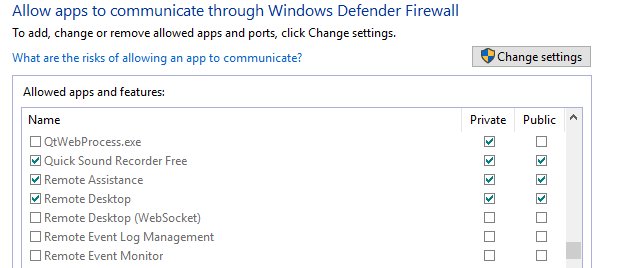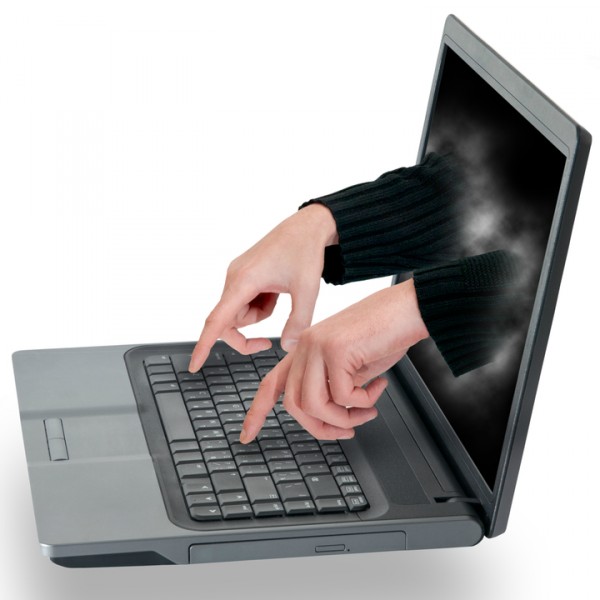- When using Remote Desktop on Windows 10 and using a Microsoft account to authenticate, the login will sometimes fail if the credentials have not been updated locally. This happens when users only use a pin or picture password when logging in at the local console. This can happen even if the user changes the password on the Microsoft site.
- To eliminate this, Microsoft introduced the Remote Credential Guard feature. When you enable this feature, Windows can protect your credentials by properly redirecting the Kerberos requests back to the system that is requesting it. Here is how you can easily enable the Remote Credential Guard feature to secure the remote desktop in Windows 10.
- Method 4 – Remove your Credentials from Remote Desktop. According to some users, the Remote Desktop won’t connect because of the issue with credentials. So remove the credentials to fix the RDP connection issue. Follow the steps to do so: Hit Windows + S Key enter remote desktop. And from the menu click on Remote Desktop Connection.
- To access Remote Desktop Connection, open the Start menu, select All Programs, open the Accessories folder, and click on Remote Desktop Connection. Or just click on Start and type in remote desktop. On the General tab on the Remote Desktop Connection dialog box, there is a check box called Allow me to save credentials.
Open the Control Panel. Go to Control Panel User Accounts Credential Manager. Click on the Windows Credentials icon. Under the Windows Credentials section, click on the TERMSRV entry related to the desired remote host and click the link Remove.
Do you need remote access to your home or work computer? Remote Desktop Connection is a nice feature included with every Windows installation, which makes it easy to access your computer remotely from another computer. By default, Remote Desktop is disabled for security reasons. In this tutorial we’ll show you how to set up and use Remote Desktop Connection in Windows 10.
Part 1: Turn On Remote Desktop Connection in Windows 10
In order to set up Remote Desktop Connection, follow these step-by-step instructions:
Remote Desktop Windows 10 Credentials Did Not Work
- Press the Windows key + X to open the Quick Access menu. Click System from the menu that pops up.
- The next window will show you all of the basic specifications of your computer such as model number, CPU configuration, installed memory, etc. Click on the “Remote settings” link on the left pane.
- Tick the “Allow remote connections to this computer” checkbox.
If you’ll be connecting to this computer from a system that’s running any version of Windows older than Windows 7, then do not check the “Allow connections only from computers running Remote Desktop with Network Level Authentication” checkbox.
- To grant Remote Desktop access permissions to a user account, click on “Select Users” on the bottom right of the window. This opens the Remote Desktop Users dialog box. Click on Add button to add your user account to the list.
Note:Remote desktop does not allow a user with a blank password to logon, so make sure your user account is password protected.
- Once this is done, you will now be able to connect to this computer using the Remote Desktop Connection.
Part 2: Connect to Your PC Remotely
Now you can connect to your computer from another Windows PC, by following these steps:
- Press the Windows key + R to open the Run box. Type mstsc and hit Enter.
- A Remote Desktop Connection dialog box will pop up now. In this box type your computer’s IP address and click Connect.
- You will be prompted to enter the login credentials of the Windows account you’ve granted Remote Desktop access to. Click OK and Windows Firewall may give you a warning. Just ignore it and click Yes and your remote connection session will start.
Related posts:
RDP (Remote Desktop Protocol) is an important feature of Windows 10. This allows the users to control the system from another device or regain files or provide PC support. This is convenient for the customers. But if your system is not connected to the internet properly, then you are not able to make use of the RDP feature in Windows 10. However, there are other factors as well that causes the Remote Desktop connection issue in Windows 10.
There are various free utilities that provide setup with a remote connection. In this article know how the RPD connection works and also how to troubleshoot remote desktop connection problem in Windows 10.
Since the proper networking is the basic requirement of RDP, so be sure that both computers sources are communication well or not test the network connection. And first, try to fix the problem by enabling the built-in RDP utility in Windows 10.
Troubleshoot Remote Desktop Connection Issues in Windows 10
Method 1- Enable Remote Desktop for Windows 10
The RDP feature is by default disabled and to fix the problem, you need to turn the remote feature on. Follow the given steps:
- First type: remote settings into the Cortana search box.
- Now choose the option Allow Remote Access to your computer from the results at the top.
- Next System Properties will open to the Remote tab.
- You need to select Allow Remote connections to this computer from there.
- And for better security keep the box checked for Network Level Authentication.
- And lastly, enable incoming remote connections on the connected PC.
Now check the RDP is working properly or not in Windows 10. If not then make use of the method 2.
Method 2 – Check the Firewall
Here you need to verify the Windows firewall as this might also be creating the problem:
- Go to Control Panel then Windows Firewall and click on Allow an App or feature through.
- Now in this Window select the Remote Desktop Connection if it is not enabled by default and click on Change Settings.
- Check the firewall settings and enable all incoming Remote Desktop Connection
By checking the firewall settings you can fix the problem but if not then you need to check some other important services. The RDP service is provided by Windows and this service must run in any Windows OS it doesn’t matter it is enabled or properly checked. But if the RDP service is not running automatically then you need to run it manually.
Also Read:
Method 3 – Remote into Your PC
You have many choices when it comes to remotely connect to the other computer. For this use traditional desktop app or the Remote Desktop universal app
Tip: If you have a lot of PCs and devices on your home network, a useful free utility to use is Advanced IP Scanner
Windows 10 Remote Desktop Credential Setting
- Install and launch the app and type a name for the PC, its hostname or IP address, and select Connect.
- Next enter the username and password used for the computer you’re connecting into. And also, if you’re going to remote into it often, then check the box to remember your credentials.
- You will get the security message, click Go ahead and Connect and check the box for it to not remind you again.
- Next, you can now start using the remote computer for configuration, remote support, or as per your requirement
- You can also go to Settings and then connection settings in the app and configure the appearance, devices and also make other adjustments according to your requirement.
Method 4 – Remove your Credentials from Remote Desktop
According to some users, the Remote Desktop won’t connect because of the issue with credentials. So remove the credentials to fix the RDP connection issue.
Follow the steps to do so:
- Hit Windows + SKey > enter remote desktop. And from the menu click on Remote Desktop Connection.
- As the Remote Desktop Connection window opens > go to Advanced tab > click on Settings.
- Next click on Delete Credentials.
- After deleting credentials, check whether the issue is resolved or not.
Method 5 – Turn Off Custom Scaling
If the above solution won’t work for you then it might happen the issue is related to custom scaling. Many users’ uses the custom scaling on larger monitors, but sometimes this can cause issues with Remote Desktop. This can be fixed by turning custom scaling off.

Follow the steps to do so:
- Press Windows + I key to open Settings app> go to System
- Check if custom scaling is turned on, you can see “A custom scale factor is set message.” > click on Turn off custom scaling and sign out.
- And as you sign back in > the scaling should be set to default and the entire Remote Desktop problem is resolved.
Method 6 – Check if 3389 Port is Enabled
The firewall blocks certain ports for protecting your system but in some cases, this can block certain ports as well mistakenly.
The 3389 port is the one that might be blocked by Firewall and due to this, you are facing the Remote Desktop not working after Windows 10 update.
The port 3389 is utilized by Remote Desktop and if this is not enabled then you might start getting the error. And if the port enabled then disable and enable your firewall. As the quick firewall reset fixes the issue.
Method 7: Reinstall RDP Windows 10
Well, if none of the above-given solutions works for you then reinstall remote desktop Windows 10. This is the last solution that works for many users. First, uninstall the RDP and after that reinstall RDP Windows 10.
Follow the steps to do so:
- Click Start > right-click on Computer > choose Properties
- Choose the “Remote Desktop” tab > click Advanced > choose to Allow whether you have an older version or latest version of RDP installed on your system.
- Choose OK > close your windows. Restart your computer.
- RDP will now reinstall itself.
Hope after following the given solutions you are able to fix the Remote desktop connection not working in Windows 10.
Conclusion:
So this is all about the remote desktop connection not working issue in Windows 10.
I tried my best to provide the possible solutions to fix RDP connection issue in Windows 10.
Follow the given solutions one and one and get rid of the issues in Windows 10 OS.
Apart from that make use of the Windows Repair Tool if your Windows OS system is responding slowly or the apps are performing unhurriedly. This tool will gradually fix various errors in Windows 10 and also increases the performance of the PC and apps. Apart from that Windows issues and errors, this is also capable to fix Registry error, PC error, Network error, hard Drive and many others.

Additionally, if you find the article helpful or have any query, comment, questions or suggestions related, then please feel free to share it with us in the comment section below or you can also go to our Fix Windows Errors Ask Question Page.

Good Luck!!!
